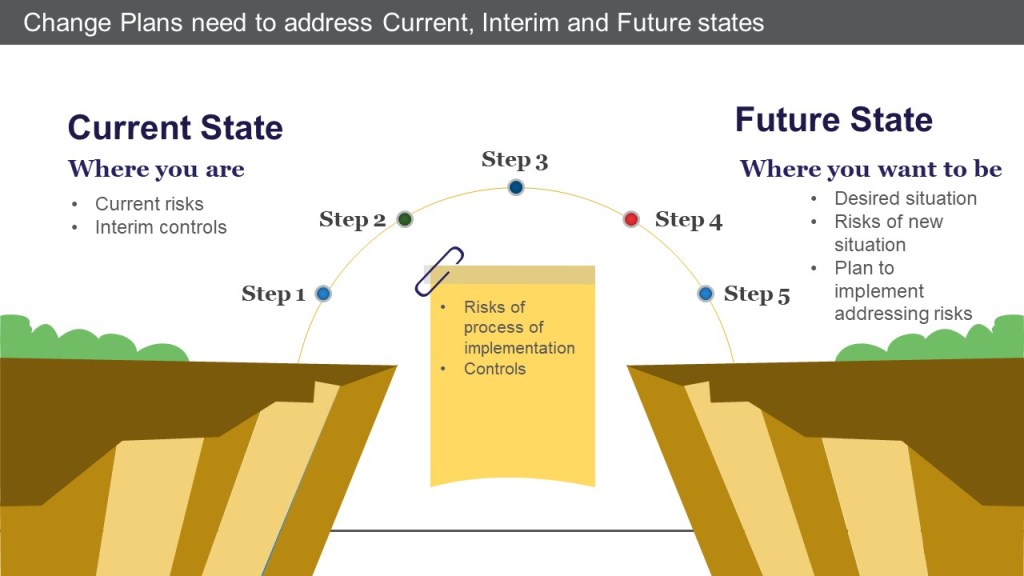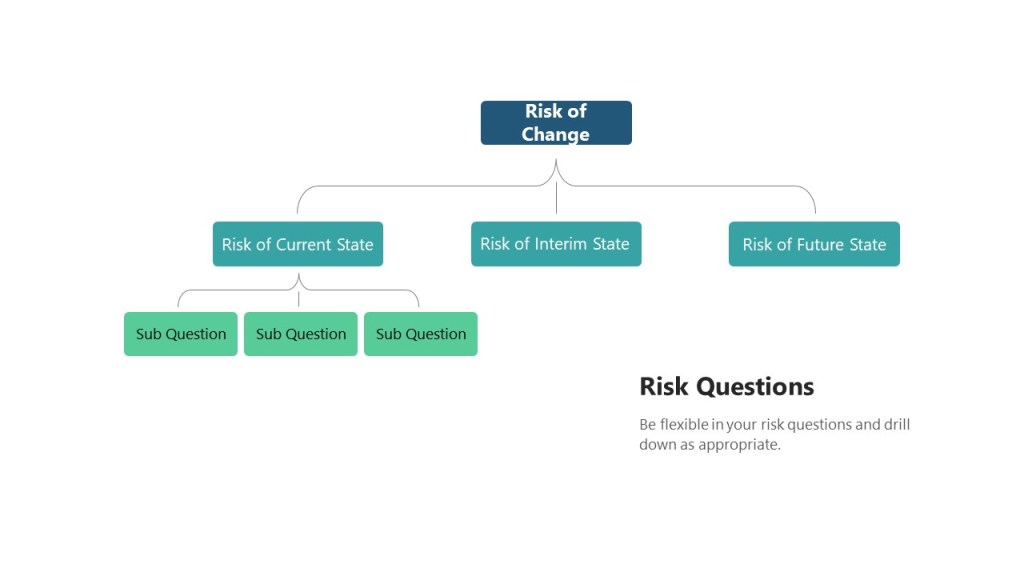The PIC/S recommendation on change control section 5.3 “Change Planning & Implementation” recognizes that changes often address issues that need to be remediated:
- Potential risks with the current state (until changes are implemented) and any risks that might be temporarily introduced during the change process are adequately assessed.
- Interim controls (short-term measures), as needed, are identified and implemented in a timely manner to monitor/mitigate risks associated with the current situation (until change implementation).
This section also recognizes that changes introduce an interim set of conditions that lead to implementation – from opening a machine through massive construction activities, and just about anything else.
A good change control does not just address what is necessary to implement the desired future state. It also contains interim controls for managing the current state until the future is implemented, and addresses all of the potential risks during the process of implementation.

Often the change control stems from an action plan in a CAPA record, where the interim controls are specifically called out and detailed. These may be adequate for a relatively brief period but are not realistically sustainable. Remember that these interim controls must also go through the appropriate change control process. Which may have been a separate change control or be part of this change control. In all cases, the change control should either determine that the CAPA plan is adequate or identify additional risks that were identified during change planning.
Risk assessments for change control should really have three basic risk questions:
- What are the risks of the current state as we implement the change?
- What are the risks of the implementation process?
- What are the risks of the future state?
As discussed elsewhere, these questions are really branching trees.

Interim controls in a change are usually little temporary changes in the change plan that either mitigate occurrence or impact.
| Interim Control Type | Mitigate Occurrence | Mitigate Impact |
| Examples | Every record processed will be reviewed for the event error before completion. Revised preventive maintenance procedure to require vibration test at next preventive maintenance. Increase cleaning frequency of incubator. | Add emergency response steps to address a valve that is malfunctioning. Add engineering check for pump prior to each use. Perform cleaning log review prior to use. |
As temporary changes, it is important to determine how they will be implemented, if they require monitoring, and how they will go away. Often the process of implementation of the change removes the temporary changes, but that is not always the case.
